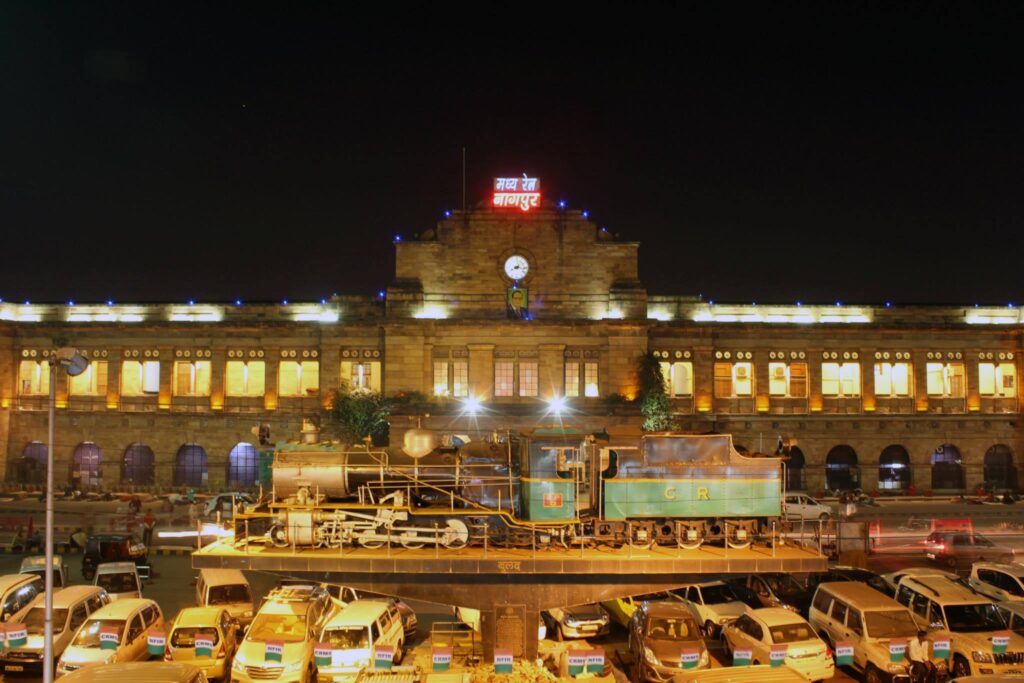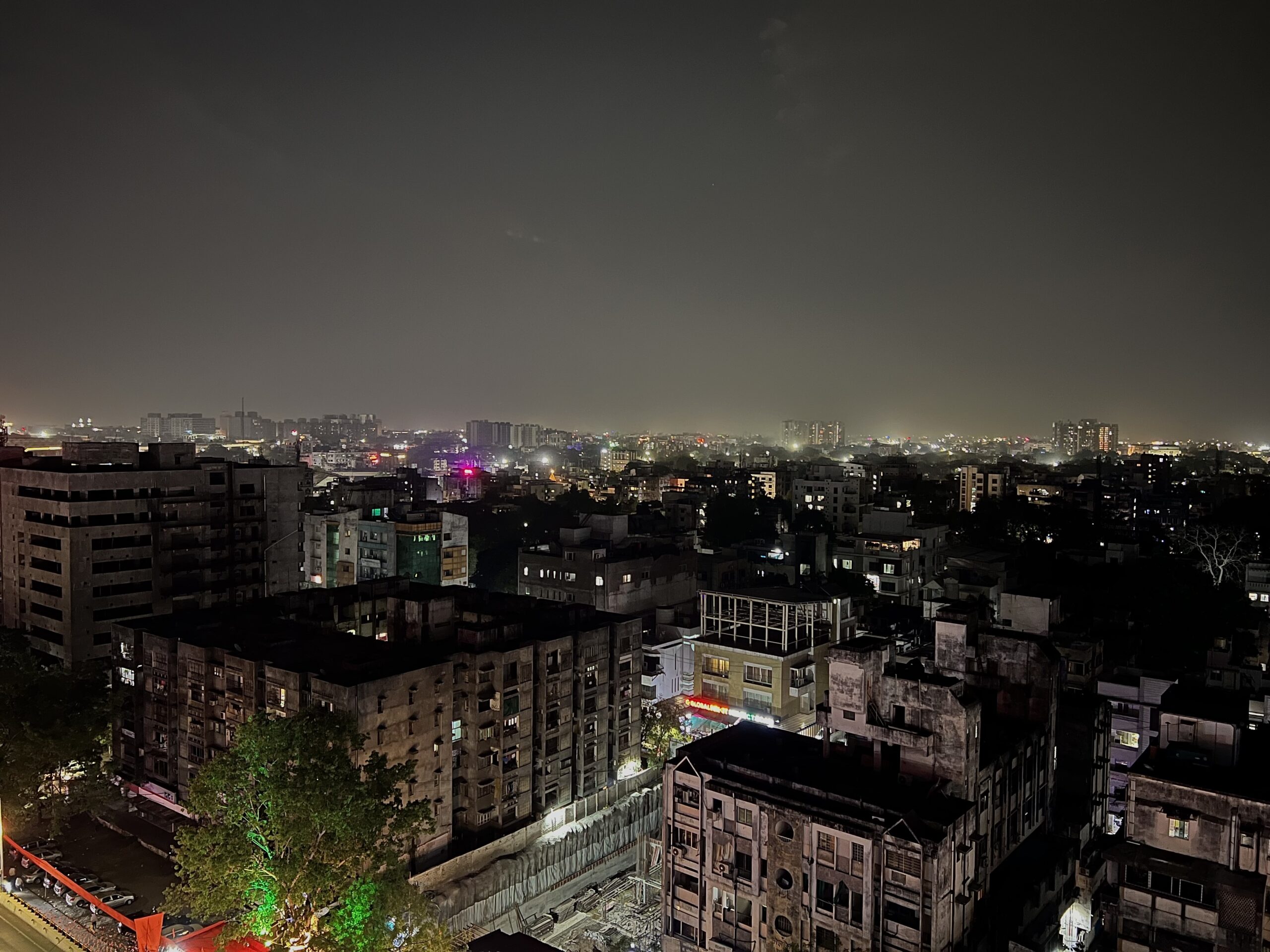In a dramatic turn of events in Nagpur, authorities have enforced an indefinite curfew following violent clashes that erupted over the controversial tomb of 17th-century Mughal ruler Aurangzeb. The disturbances, which left over a dozen police officers injured, have reignited debates surrounding historical memory, religious sentiment, and the politics of heritage in India.
A Contested Legacy and a Flashpoint for Violence
The incident was triggered by the demands of a prominent Hindu organization calling for the removal of Aurangzeb’s tomb—a symbol that has long been associated with the contentious legacy of the Mughal ruler. The group, affiliated with the Vishva Hindu Parishad (VHP), has argued that the mausoleum represents an era of persecution and subjugation, and they have been vocal in their insistence that it should be replaced with a memorial honoring local Maratha rulers. This call for removal is seen by many as part of a broader effort to reshape historical narratives in favor of indigenous cultural icons.
On Monday, clashes erupted in the city as demonstrators rallied near the site of the tomb. Eyewitnesses reported that some protestors, chanting slogans, burned effigies of Aurangzeb and defaced the monument in a symbolic act of rejection. The atmosphere quickly turned volatile when members of opposing groups, including some reportedly from local Muslim communities, converged on the area, leading to a series of confrontations. Masks and improvised weapons added to the tension, complicating efforts by the police to manage the situation.
Government Response: A Call for Order
In response to the escalating violence, the police imposed an indefinite curfew in certain parts of Nagpur, aiming to restore calm and prevent further clashes. The situation reached a critical point as at least 15 police personnel sustained injuries, with one officer reported to be in serious condition. This enforcement measure underscores the gravity of the situation, as local law enforcement struggled to contain the unrest in a city already known for its politically charged environment.
Devendra Fadnavis, the Chief Minister of Maharashtra, issued a stern video message condemning the violence and urging immediate action to maintain law and order. “I have instructed the police commissioner to take all necessary steps to restore calm and ensure the safety of every citizen,” Fadnavis stated. While firmly denouncing the disorder, Fadnavis also expressed a measure of sympathy towards the campaign against the tomb, remarking on the paradox of having to protect a monument he described as embodying a history of persecution. His comments have sparked debate, as they reveal the complex and often contradictory narratives that underpin Indian political discourse.
The Role of the Vishva Hindu Parishad and Political Affiliations
The VHP, a group with historical links to the Rashtriya Swayamsevak Sangh (RSS) and the Bharatiya Janata Party (BJP), has played a central role in mobilizing support for the removal of the tomb. Despite widespread reports of violence, the VHP has officially denied any involvement in inciting clashes. In a video message released shortly after the incident, Milind Parande, the general secretary of the organization, reiterated their position, insisting that their campaign is focused solely on replacing the tomb with a memorial that pays homage to the Maratha rulers—figures revered for their contributions to regional history.
Critics, however, argue that the symbolic nature of the protest and its association with groups linked to the ruling political establishment suggest a deeper, more politically charged motive. They contend that the agitation over the tomb is not merely about historical revisionism but is also an effort to assert a dominant narrative that marginalizes the contributions and experiences of Muslim communities in India. Such actions, they warn, have the potential to exacerbate existing communal tensions in an already polarized socio-political landscape.
Escalation of Tensions and Wider Implications
The violence in Nagpur did not occur in isolation but is part of a broader pattern of clashes that have periodically erupted across India, often centered around contested historical sites and symbols. In recent years, several incidents have highlighted the volatility surrounding monuments linked to the Mughal era, with extremist groups targeting sites that they believe symbolize a dark chapter in India’s past. The latest incident in Nagpur has reignited these debates, prompting discussions about the role of historical memory in contemporary Indian society.
The controversy over Aurangzeb’s tomb touches on deep-seated issues related to identity, history, and nationalism. For many, the tomb is not just a relic of a bygone era but a reminder of a period characterized by religious and cultural conflict. For others, it is an integral part of India’s multifaceted heritage that deserves preservation, regardless of the past transgressions attributed to its occupant. The clash of these perspectives is indicative of the challenges facing India as it navigates the complex interplay between history and modernity.
Voices from the Community
Local residents in Nagpur have expressed a mix of emotions following the violence. Many are dismayed by the disruption and the apparent polarization that the incident has brought to their community. “It’s heartbreaking to see our city divided by a debate that should have been settled long ago,” said one local shopkeeper, who wished to remain anonymous. “We need a way to reconcile our past with our future without resorting to violence.”

On the other hand, supporters of the VHP’s campaign argue that their actions are a necessary corrective to a historical narrative that has long ignored the struggles and sacrifices of regional communities. “Our demand is not against history but for a more inclusive recounting of it,” stated another protester at the scene. Such conflicting narratives underscore the profound divisions that continue to exist within the fabric of Indian society.
The Impact on National Politics and Social Harmony
The Nagpur incident has significant implications for national politics, especially in the context of the current government’s policies and the ongoing debate over secularism in India. Prime Minister Narendra Modi and his administration have faced criticism from various quarters for their handling of issues related to communal harmony and minority rights. Critics argue that by allowing groups like the VHP to operate with relative impunity, the government is inadvertently endorsing a narrative that favors one community over another.
Conversely, supporters of the government contend that the state is committed to upholding law and order, as evidenced by the swift imposition of a curfew and the proactive measures taken by the police and state authorities. They maintain that the incident is an unfortunate but isolated event, one that does not reflect the broader policies of inclusion and development promoted by the current regime. Nonetheless, the incident serves as a stark reminder of the challenges that remain in ensuring that India’s diverse cultural and historical heritage is managed in a manner that fosters unity rather than division.
Reflections on Historical Memory and the Future of Heritage Sites
The controversy surrounding Aurangzeb’s tomb raises important questions about how nations deal with contentious aspects of their history. Heritage sites, particularly those linked to periods of conflict and oppression, often become battlegrounds for competing narratives. In the case of India, where history is a complex tapestry of cultural syncretism and conflict, the management of such monuments is fraught with political and emotional significance.
Scholars and historians have long debated the role of monuments in shaping collective memory. Some argue that preserving such sites, even those associated with dark chapters, is essential for a comprehensive understanding of history. Others contend that maintaining them without proper contextualization can inadvertently legitimize past atrocities. The debate over Aurangzeb’s tomb is emblematic of this broader struggle over historical interpretation—a struggle that is likely to continue as new generations seek to define their cultural and political identities.
A Call for Dialogue and Reconciliation
In the aftermath of the violence, there have been calls from various quarters for a return to dialogue and a commitment to peaceful resolution of historical disputes. Many civic leaders and intellectuals have stressed the need for an inclusive conversation that acknowledges the multiplicity of narratives that constitute India’s past. They argue that only through such dialogue can the country hope to heal the deep-seated wounds that continue to divide its communities.
Efforts are now underway in several parts of the country to organize forums and discussions on the role of heritage in modern India. These initiatives aim to bring together historians, community leaders, and policy makers to explore ways in which contentious sites can be preserved, reinterpreted, or repurposed in a manner that respects all facets of India’s diverse history. Such measures, they hope, will not only prevent future outbreaks of violence but also pave the way for a more harmonious and inclusive approach to national heritage.
Conclusion: Navigating the Path to Unity
The recent violence in Nagpur over Aurangzeb’s tomb is a potent reminder of the enduring power of history and the complexities involved in reconciling divergent narratives. It illustrates how symbols from the past can ignite passions in the present, leading to unrest and division. As the government takes steps to restore order and prevent further violence, the incident also offers an opportunity for reflection on how India can navigate its intricate historical legacy.
In a nation as diverse as India, finding common ground requires not only strong law enforcement but also a commitment to understanding and respecting differing perspectives. The imposition of the curfew, while necessary for immediate public safety, must be accompanied by long-term efforts to engage communities in constructive dialogue. Only then can India hope to transform its historical divisions into a cohesive and forward-looking narrative—one that honors the past while embracing the promise of a unified future.
As authorities continue to investigate the incident and restore calm, the lessons from Nagpur resonate far beyond the city limits. They serve as a call for all stakeholders—from government officials and community leaders to the media and the public—to work together in reimagining a heritage that celebrates diversity rather than discord. In doing so, India can pave the way for a future where history is not a source of conflict, but a bridge to understanding and unity.










